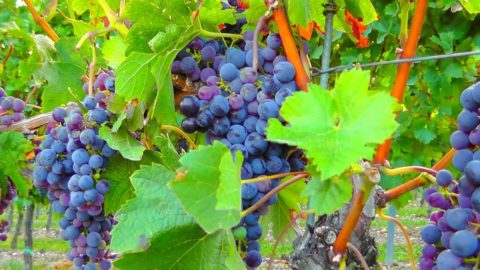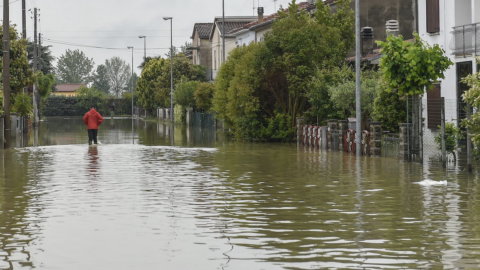Positive balance for the 2018 harvest, despite the climate keeping the producers on their toes throughout the agricultural year, up to the very end, between abnormal heat and violent rainfall. According to data released by Federvini, compared to 2017 an average increase of 15% was recorded in Italy, with a total production of 49,5 million hl: the federation of producers, importers and exporters of wine at the moment complies with the data that the Ministry of Agricultural Policies has communicated to the European Commission, despite knowing that there may be further filings once production complaints have been captured and processed. Going into detail, here are the data by Region.
NORTH JUTLAND
In Piemonte the harvest began with an average advance of a few days compared to 2017: an increase in production is ascertained, estimated at just under 3 million hectoliters; from a qualitative point of view, good/excellent levels were recorded with some peaks of excellence In Lombardia the general climatic conditions ensured a good year with a production of 1 million 285 thousand hl; in particular, for the white or more precocious vines there is a lowering of acidity; the development of red berried varieties such as Merlot is interesting.
In Trentino Alto Adige the picture is decidedly positive, with a collection of 1.266.000 hl. Throughout the region most of the grapes were harvested between 10 September and early October with the closure dedicated to Cabernet grapes. From a qualitative point of view, an excellent vintage is expected. In Veneto, also thanks to optimal temperatures, there are the conditions for obtaining quality wines with peaks of excellence, especially for white berried varieties. A higher quality on average than in 2017 and also from a quantitative point of view it stands at +17%.
In Friuli Venezia Giulia the season started with a slight delay and continued without problems until flowering. This scenario ensured a very good result from a qualitative and quantitative point of view with 1.742.000 hl. In Emilia-Romagna the overall growth is higher than the average with a good/excellent quality of the grapes, with regular oenological parameters and adequate sugar concentrations. Production reaches 7.797.000 hl. In Emilia the deliveries of the Pignoletto, Malvasia and Ancellotta grapes began in September, while for the Lambrusco the last decade was expected; in Romagna Albane and Cagnina at the beginning of September and, at the end of the month, Trebbiano and Sangiovese.
CENTER
In Toscana, the first analyzes of the grapes showed normal phenolic ripening, starting in the second half of August with early cultivars. In early September, the red berried grapes ripened immediately, and from the second half of the month we moved on to Vernaccia, Vermentino and finally Sangiovese. Production stands at 2 million 26 thousand hl. In Marche the maturation arrived with an advance of 7/10 days. We started in August with Pinot Noir, then Chardonnay and Pecorino in the last decade. At the beginning of September there were the deliveries of Verdicchio and Passerina, to continue in the middle of the month with Sangiovese. He closed the Montepulciano at the end of September. Overall, there was a production of 813 thousand hl.
THEAbruzzo had a more balanced production compared to 2017 with 3 million 312 thousand hl. The harvest of the early varieties such as the Chardonnay began on 20 August in the coastal area, while in the hilly area it started in early September. For the red berried varieties (Sangiovese and Montepulciano) we started in the last week of September. In Lazio production stood at 897.000 hl. Unfortunately, the violent storms in August caused significant damage to the vineyards in some areas. In any case, the harvest began regularly after August XNUMXth, first with the early international white berried varieties and then with the autochthonous white grapes and the first Merlots. Also in Umbria the season was mainly characterized by rain. The harvest of the grapes for the spumante bases began around 20 August, the Grechetto and the Trebbiani instead towards mid-September. Production stands at 339 hl.
SOUTH AND ISLANDS
Despite the somewhat 'dancer' spring climate, in Campania the harvest times were within the norm, starting from the white grape varieties in Cilento at the end of August. In the Aversano countryside it continued in September with Asprinio and Fiano. In the Avellino area, between September and October, it was the turn of Fiano di Avellino and Greco di Tufo. Campi Flegrei were characterized in October for Piedirosso, while Aglianico closed at the end of October. Production reached 711 hl. Also in Puglia, the first grapes to be harvested were the sparkling base grapes at the beginning of August; it was then continued with the native white grapes. In various areas, the Scirocco wind has caused the formation of dew on the vine leaves, causing the formation of fungal diseases.
Not an easy situation for the collection of Primitivo and Negramaro. Puglia reaches 9 million 119 thousand hl. In Sicilia there is a differentiated situation between the western part - much affected by rain and bad weather - and the eastern part, where the quality of the grapes is optimal, starting from the spumante bases harvested at the end of July and continuing in mid-August with Nero D'Avola, Syrah, Merlot and Grillo and finish at the end of the month with Catarratto, Inzolia and Grecanico. Production stands at 4 million 307 thousand hl. There Sardinia had to face in some of the blight bouts. In general, however, the harvest was good, starting on 10 August with the spumante base grapes and continuing with Vermentino and Torbato. In the last ten days of September it was the turn of Cannonau and Carignano, to close with the dessert wine grapes Malvasia and Nasco. This year the production is equal to 395 thousand hl.





